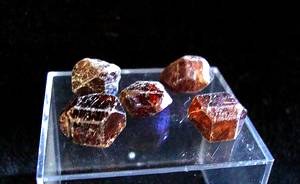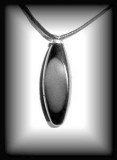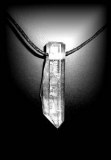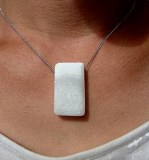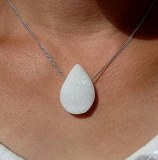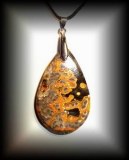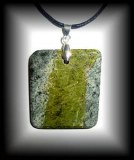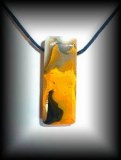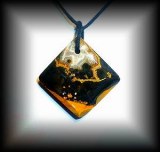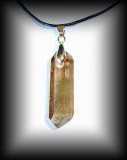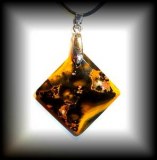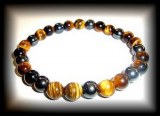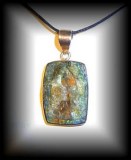|
||||||||||
|
|
ZIRCON ( 5gr/1cm)
Reference PI-ZIRCON-PAT
ZIRCON
The word comes either from zircon Arabic zarqun "cinnabar, or Persian zargun, gold. One finds this etymology in English jargoon, which means light-colored zircons. Zircon garnet yellow hyacinths are called (from the Greek meaning "hyacinth"). Transparent specimens are used in jewelry for uses similar to those of diamond.
Zircon is a mineral group of silicates, specifically nesosilicates. Its chemical formula is ZrSiO4, it is natural zirconium silicate.
Zircon crystallizes in tetragonal crystal system (crystal class 4 / m 2 / m 2 / m) and has a relative hardness of 6.5 to 7.5 on the Mohs scale. Sometimes colorless zircons have a natural color that varies from golden brown to red, but they can also be green, blue or black. Zircon dust is white. The specimens, which by their size and purity are considered gemstones are valued as a substitute for diamonds, with which they are often confused.
Some zircon grains were dated as the oldest known terrestrial minerals witnesses (see below). The mineral zircon is formed, among others, during the genesis of igneous rocks of the more common, the main constituents of the earth's crust: the granites at large ("granitic" is the correct technical term). It appears as one of the early products of primary crystallization of igneous rocks such as granite and alkaline rocks such as pegmatite or syenite. In metamorphic rocks zircon occurs as recrystallized or epitactic. Found in sediments of detrital zircons, that is to say grain carried and transported by erosion. Zircons typically have an average size between 100 and 300 microns, eg. in granitic rocks. However occasionally they reach the size of several centimeters, especially in pegmatites, or after transport in alluvial deposits (placers).
EXCELLENT 1ST CHAKRA STONE!
Zircon is a mineral group of silicates, specifically nesosilicates. Its chemical formula is ZrSiO4, it is natural zirconium silicate.
Zircon crystallizes in tetragonal crystal system (crystal class 4 / m 2 / m 2 / m) and has a relative hardness of 6.5 to 7.5 on the Mohs scale. Sometimes colorless zircons have a natural color that varies from golden brown to red, but they can also be green, blue or black. Zircon dust is white. The specimens, which by their size and purity are considered gemstones are valued as a substitute for diamonds, with which they are often confused.
Some zircon grains were dated as the oldest known terrestrial minerals witnesses (see below). The mineral zircon is formed, among others, during the genesis of igneous rocks of the more common, the main constituents of the earth's crust: the granites at large ("granitic" is the correct technical term). It appears as one of the early products of primary crystallization of igneous rocks such as granite and alkaline rocks such as pegmatite or syenite. In metamorphic rocks zircon occurs as recrystallized or epitactic. Found in sediments of detrital zircons, that is to say grain carried and transported by erosion. Zircons typically have an average size between 100 and 300 microns, eg. in granitic rocks. However occasionally they reach the size of several centimeters, especially in pegmatites, or after transport in alluvial deposits (placers).
EXCELLENT 1ST CHAKRA STONE!

